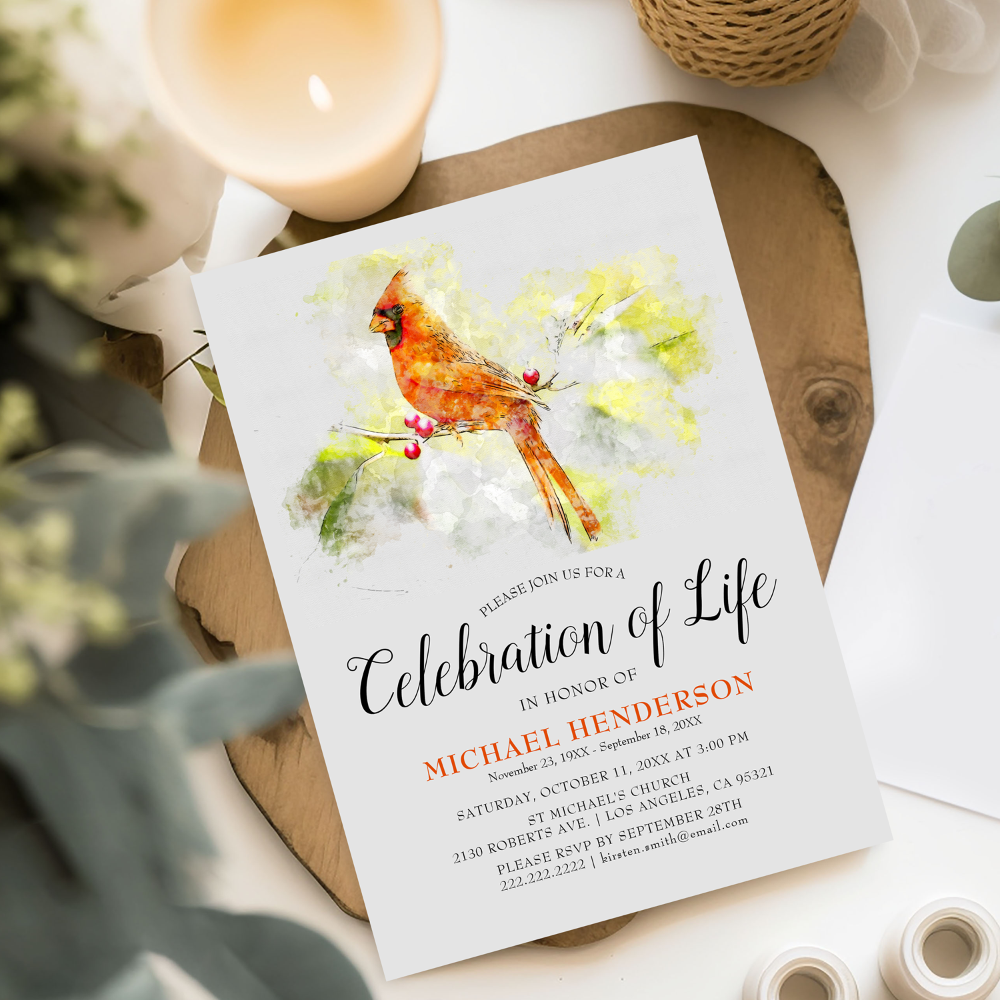First of all, if you’re reading this, then it’s probable that you’ve recently lost a loved one; our sincerest condolences to you, if so. Losing a cherished friend or beloved family member is never easy, and despite the well-intentioned platitudes from those around you, it’s hard to feel happy – the world doesn’t seem as bright as it once did.
One way that some people cope with their bereavement is by holding a ‘celebration of life’ (or a ‘life celebration’). These events, which are more upbeat and joyous than a funeral, are becoming increasingly popular as a means of honoring the deceased, starting the healing process, and delivering some closure. In contrast to a funeral or a memorial service, which typically have a set order of events, a celebration of life can take almost any form, and are usually held a few weeks or months after the person has passed away.
Now that you’re more familiar with the concept of a life celebration, we have some tips to share for when it comes to planning such an event. Read on to learn more about how you can commemorate your loved ones in a cheerful, but nonetheless respectful, manner.
Consider Everyone’s Wishes
Naturally, since you’re dealing with the death of a loved one – and are all still probably grieving, unless you’ve postponed your celebration of life until more time has passed – emotions are going to be running high. When it comes to the ‘correct’ way in which to commemorate someone’s life, and in particular, when it comes to fulfilling a person’s wishes most appropriately, it’s hard to achieve a consensus. The best you can do is to keep everyone involved in the decisions being made, as participating in the organization of such an event can actually help people find closure and comfort. That said, while a celebration of life is meant to be a positive, healing experience, it isn’t for everybody, and it’s important to recognize that, too. There’s also nothing wrong with holding the celebration of life in a year or two’s time, for instance.
Determine a Budget
And on that note: since there’s no strict requirement as to when a celebration of life should take place, you can wait until you’ve had time to build your finances. Funerals are held shortly after the person passes away, as their body or ashes are usually present; the urgency of this, however, means that you might not be best prepared to pay for the sudden costs of planning a funeral. Take the time, when planning a celebration of life, to prudently allocate funds towards each aspect of the event, such as the décor, invitations, venue, food and refreshments, and the cost of conducting activities or hosting guests. A celebration of life is usually paid for by the surviving family members, but you can also invite donations (or, ideally, request contributions be made to a charity or cause close to the decedent’s heart).
Choose a Venue
Another difference between a celebration of life and a funeral is that venue options are far more flexible. Instead of a church or chapel, a celebration of life can be held in a hotel, restaurant, person’s house, community space, or even at the beach! Consider the wishes of the deceased person and what they might like: what were some of their favorite places to go? Did they ever express any interest or disinterest in a certain location for a potential funeral or celebration of life? Were they a religious person or not? Broadly, the more closely the venue resembles a place of worship, then the more formal and reverent the tone is intended to be, and the choice of venue will also dictate what readings and activities should be planned.
Other than the preferences of the departed person, however, the most crucial considerations are convenience and accessibility: if any family members and close friends find the venue difficult to get to, then it may be upsetting or stressful.
Send Out Invitations
Unlike a funeral, which is generally open to the public, a celebration of life is usually only attended by invitees. Once you’ve decided on a venue, then, and drawn up a budget, you can start planning a guest list comprising close friends, immediate family members, and even distant relatives, if you like. As with any other event, invitations to a celebration of life should include the date, time, venue, and occasion being celebrated. In contrast to a funeral or memorial service, however, a celebration of life embraces warm, lively colors: don’t be afraid to cover the invite in red and gold if they were the deceased’s favorite colors.
Perhaps the most important detail of all, though, is the dress code: unless guests are advised to wear something different, then they’ll probably arrive at a life celebration in formal, dark clothing. If you have a certain theme or color in mind, make that obvious on the invitation, and guests will know to dress accordingly.
Plan the Service
The tone and schedule of a life celebration are highly personalized to the individual being honored. In other words, if a person – or their friends and family members, on their behalf – wants to have a completely secular ceremony, with no religious officials present, then it’s their prerogative to do so; in such a case, poems and stories could be recited instead of prayers and hymns. Given the concept of the ‘celebration of life,’ friends, relatives, and colleagues are usually invited to share their fondest memories of the person, emphasizing their best qualities and reminding everyone of why they won’t be forgotten. Because this can be an emotional experience, however, as well as an entertaining one, we’d recommend hiring an MC to introduce each speaker and to ensure that the program is adhered to throughout the event.
Lay Out Food
It almost goes without saying that, if you’re hosting a celebration of life that lasts several hours and involves dozens of guests, then you’re going to have to feed and water them at some point. Depending on the theme, location, and formality of the event, this could be a buffet of finger food, a sit-down meal, or a BBQ in the backyard, but again, it’s vital that you pay some thought to what the person being celebrated would have liked, and to plan your menu accordingly. Earlier, we suggested getting an MC to conduct the ceremony – provided there isn’t another church minister or celebrant present – and when it comes to food, our advice is similar: avail of a catering company’s services. If your budget can accommodate it, then it’s worth the extra money to have everyone’s meals prepared and served.
Hang Up Décor
While a celebration of life isn’t necessarily a full-on party – though it can be! – it’s always a good idea to decorate the venue in a fun way. Photos of the deceased person are essential, especially if you and any of the surviving family members choose them as a collective, and you can display everyone’s favorite photos in memorial plaques and signs around the room. You can liven up a private residence or catering hall with celebration of life party supplies, such as napkins, paper plates, and paper cups, and you can also hang or stand celebration of life banners in the background.
Basically, your aim is to infuse the venue with the personality of the person that’s passed; to make the whole room a vibrant tribute to their passions, successes, and positive traits. Thankfully, our Independent Creators are aware of this brief, and have uploaded thousands of different celebration of life templates for you to personalize with photos, dates, and loving messages.
Organize an Activity
The final way in which funerals and celebrations of life diverge is that the latter often incorporates an activity. For example, if the deceased person was a ten-pin bowling fanatic, then you could take a trip to a bowling alley after the ceremony; if they were a font of obscure facts and general knowledge, then you could host a quiz or play Trivial Pursuit. For some, the thought of playing games at a celebration of life might seem odd, or even disrespectful; however, life celebrations can take many forms, as we said at the beginning of this article. If you’d rather a more subdued approach, then you could plant a memorial tree, or simply revisit a favorite place of theirs; on the other hand, if you want a more bombastic, celebratory vibe, then you could make it your mission to tick some items off their bucket list in the next few weeks.
As should be clear by now, a celebration of life is a far less somber affair than a funeral; instead, it’s a remembrance of a person and what they contributed to the world. We hope that, if you are planning a celebration of life, then the above article has given you some direction at a time you might feel directionless. Meanwhile, if you’re due to attend a funeral or celebration of life, then these articles may prove instructive: “Funeral Etiquette Rules You Should Follow” and “How to Dress for a Funeral”.
Our sympathies to you, once again, if you’re going through a trying time, and we hope that, whatever ceremony you intend to host, it provides you with some much-deserved solace.

Eoin is a Content Specialist at Zazzle in Cork. He’s recently bought a house with his fiancée, and thus most of his time these days is spent trying to keep the walls from caving in and the wolves from the door. Still, he’s always open to book, game, and movie recommendations, so if you have some, let him know: he’ll add them to a very, very long list.
















